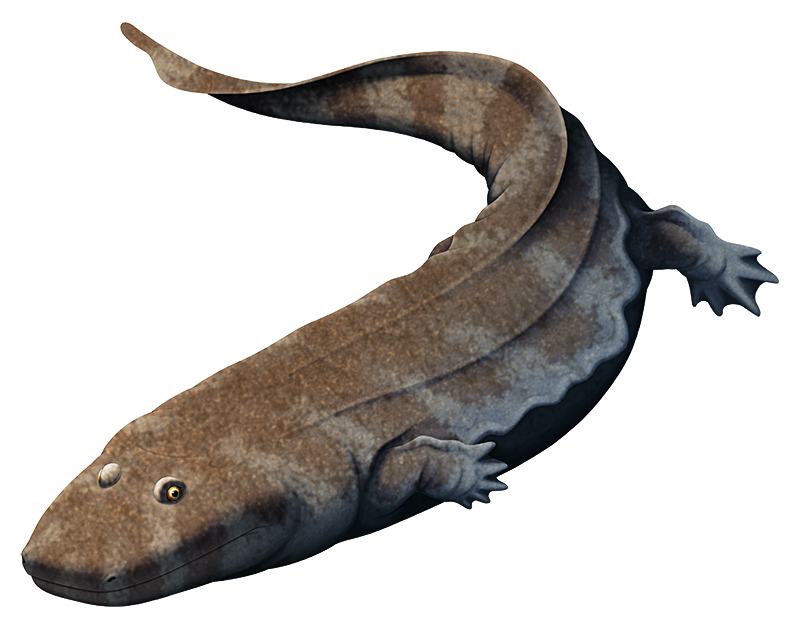Spathicephalus mirus here was part of a group of amphibian-like animals called the baphetoids, a lineage that weren’t quite true tetrapods themselves but were still very closely related to them.
Living in Scotland during the mid-Carboniferous period, about 326 million years ago, this 1.5m long (~5′) stem-tetrapod had an incredibly unusual head compared to its relatives – wide and flat, almost square in shape, with its jaws lined with hundreds of tiny chisel-like teeth.
Most other stem-tetrapods had deep skulls with large teeth, adapted for fish-eating, so clearly Spathicephalus was specialized for a very different diet. Some comparisons have been made to flat-headed ambush predator plagiosaurid temnospondyls like Gerrothorax, but a better ecological comparison might actually be filter-feeders like “pancake crocs“.

